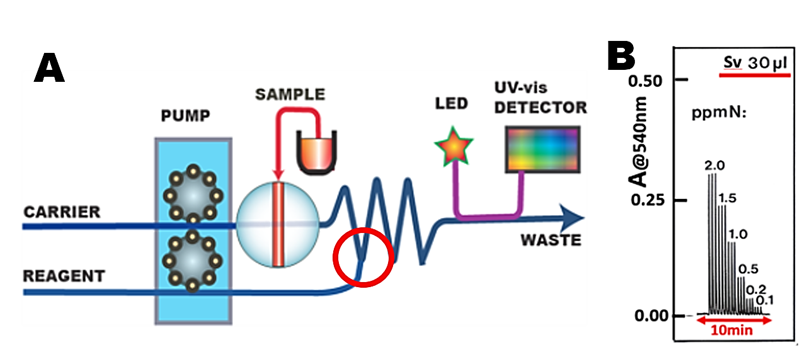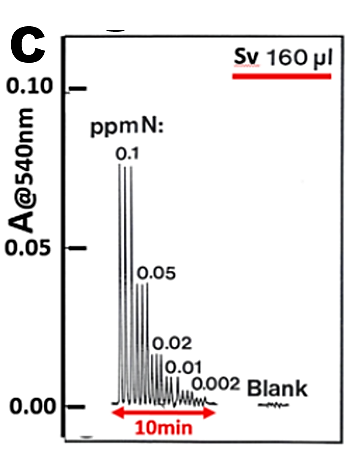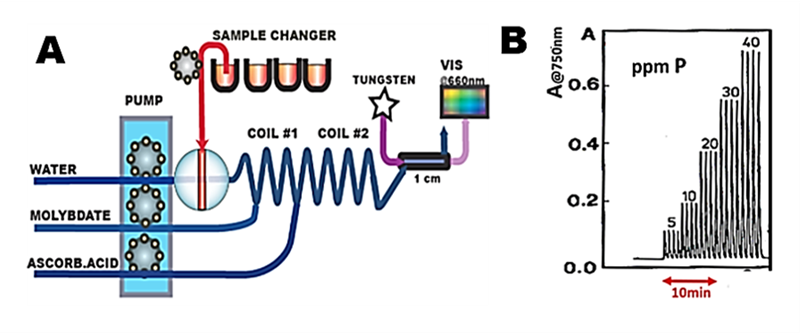2.1.3. Reagent based assays in continuous flow format
Depending on number of reagents used, chromogenic based assays are accommodated by different manifold designs. In his section flow systems designed for nutrient determinations are presented to serve as examples.
Two stream single reagent manifold (A), was used for spectrophotometric assay of nitrite based on Griess reaction, whereby nitrite is converted into red azo dye monitored at 540 nm. The reagent, prepared in diluted phosphoric acid is merged with sample, injected into carrier stream of distilled water at a confluence point, where streams, each pumped at a rate of 1.5 mL/min, combined. The reaction coil, 40 cm long and 0.8 mm I.D. was kept at a room temperature. Since the flowrate through reactor (volume 200 µL) was 50 µL/sec, the incubation time was only four seconds, yet sufficiently long, to produce concentration of the dye that allowed assay to be carried out in a range of 2 to 0.002 ppM of Nitrogen (as nitrite) (B).

Sensitivity of nitrite determination was further advanced by:
- Minimizing the volume of the reaction coil
- Maximizing flow rate
- Increasing the volume of the injected sample
By increasing injected sample volume and absorbance scale the sensitivity of assay increased ten times, while sampling frequency, 100 s/hr remained the same (C). Note that sample volume of 160 µL in single stream manifold would produce a split peak. In this double stream system sufficient concentration of reagent is maintained at confluence point.

So far 335 papers on improvement and application of nitrite determination have been published according to Hansen’s database.
Three stream two reagents manifold (A) used for spectrophotometric assay of phosphate is based on a two-step reaction. First phospho molybdate is formed rapidly, followed by slower reduction of the yellow complex by ascorbic acid to form molybdenum blue, which is monitored either at 750 nm or at 880 nm.
This method, is one of the most frequently performed Flow Injection based assays. It was, for the first time performed in FI mode almost 50 years ago (D 2), and recorded as shown here, by injecting sample volume 40 µL, at a flow rate of 0.8 mL/min, in each channel. Reactor coils #1 and #2 were 50 cm long, made of 0.8mm I.D. tubing. At a flow rate of 2,4 mL/min the residence time of the reacting mixture in the second reactor was almost 10 seconds.
With 10 mm long light path the detection limit was at about 1 ppM P with sampling frequency over 100 s/hr.(B)

The present day routine assays of orthophosphate are very similar to this old design, yet the method has been upgraded by using flow cells with longer optical path, by heating the reaction coil, and by increasing the residence time in the second reactor by making it longer. In this way the detection limit was extended down to 10 ppB P level. Claims of LOD below 1 ppB P have been made (for applications in oceanography) when using 1 m long flow cell at sampling rates of 6 s/hr.
Presently there are 445 entries for phosphate key word in Hansen’s Database.